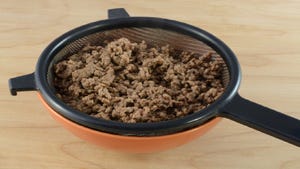December 6, 2018

Are you interested in grazing cover crops?
Here are some helpful ideas shared by Don Swanson, Henry County Farmer, and Patrick Wall, ISU Extension and Outreach Livestock Specialist, at our field day near Agency on Nov. 20 hosted by the Swanson Farm Partnership on their Heritage Farm.
Being organized and ready when the conditions are right to get it seeded in the fall.
Use the Pluck Test for turning out cattle
If you pull on the rye and the blade breaks free while the roots stay in the ground you can turn the cattle out. If the roots come with, best to wait.
Establish a good fence with high-tensile wire and flex posts
Cover crops add forage diversity for dry years when pastures and hay are in short supply
Fall Grazing – oats
Grows quickly following early season harvest of silage, seed corn or early maturing soybeans, will winter kill
Spring Grazing – cereal rye
Winter hardy and will generate majority of biomass in the spring
Start small – corn acres going to soybeans in the spring #CoverYourBeans
“Getting an extra 30 days of grazing in the spring on cover crops is part of the plan to make cover crops work economically when cost share is done,” stated Don.
You May Also Like




